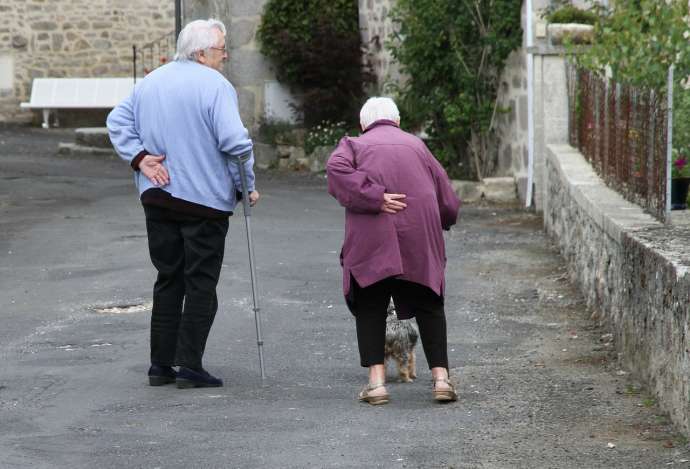STA, 30 September 2019 - As a world day dedicated to the elderly is to be marked around the world, Slovenian organisations are pointing to the problems brought by the population ageing, including the need for better regulation of long-term care, calling for higher pensions to take pensioners above the at-risk-of-poverty threshold.
Marked on 1 October, this year's International Day of Older Persons runs under the motto The Journey to Age Equality, aiming to ensure equal opportunities and reduce inequalities of outcome regardless of personal circumstances.
The first issue to be pointed out by the Association of Pensioners (ZDUS) ahead of the event is that by 2025, the minimum pension for 40 years of pensionable service, which currently stands at EUR 531, should be above the at-risk-of-poverty threshold, which last year stood at EUR 662.
The association has also called for a law on long-term care to adopted as soon as possible, which is something that the Union of Social Institutes has also been pointing to, saying that the government has "forgotten about the elderly" in the budget for the next two years.
"It has been postponing to a distant future the eagerly-awaited systemic regulation of long-term care," the union said, adding that retirement homes were facing critical shortage of beds while the availability of home care was being reduced.
According to Jaka Bizjak of the union, there are no plans to establish a new public retirement home, while the availability of home care services is becoming the key developmental problem of Slovenian society, which is ageing at a fast pace.
He pointed to studies which say that only one out of four persons older than 75 will not be needing such services, and that the costs of related services and assistance for one out of ten such persons will be "sky high".
Policy-makers in the field of long-term care announce solutions leaning towards boosting care within the family and local community, but such forms of assistance are effective only in societies with a low full-time employment rate for women.
"One cannot avoid the impression that the state bets on care within the family only because it is cheaper for the budget, and is less interested in whether this is an appropriate solution given the actual needs and capacities."
The Ministry of Health, which is drafting the relevant law, expects that it will be ready for public debate by the end of the year, while final confirmation in parliament is expected by the end of the first half of 2020.
The UN as the sponsor of the international day has pointed to the steep growth in the number of older persons, with the highest rates expected in developing countries. The number of persons older than 60 is expected to stand at 1.4 billion by 2030.
This is why the organisation believes that more attention should be paid to the needs and problems faced by older persons. It believes that their potential contribution to society is important and that respect of their human rights should be at the core of these efforts.
Slovenia is no exception in the ageing trend, with the Statistics Office (SURS) noting ahead of International Day of Older Persons that life expectancy at birth is increasing, with almost one in five Slovenians being older than 65.
There were 413,054 persons aged 65 or older in Slovenia at the beginning of this year, which means this age group representing almost 20% of total population. Women represent a majority in this age group, and 161 out of the 189 centenarians are women.
SURS also notes that the number of older people is increasingly higher than the number of children. Currently, there are more than 131 older persons per 100 children, and the ratio is projected to stand at two to one by 2033.
The highest at-risk-of-poverty rate in Slovenia is recorded in persons aged 65 or older, 18.3%, while out of some 98,000 older persons who live below the at-risk-of-poverty threshold, 60,000 are retired women.
The employment rate in the group aged between 55 and 64 in Slovenia is among the lowest in the EU due to early retirement, but it is increasing in recent years. Almost 5,000 persons aged 65 or older were active in 2018, 73.3% of whom men.
The opening of this year's Festival for the Third Age, an annual event dedicated to raising issues related to ageing, coincides with International Day of Older Persons.
Running from Tuesday to Thursday, it will again look to connect young and old people, bringing a number of round table debates on topical issues, and being accompanied by a diverse educational and cultural programmes.
All our stories on demographics in Slovenia can be found here







